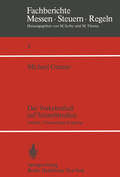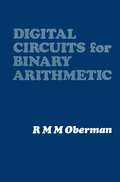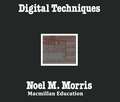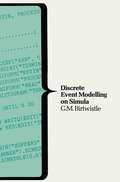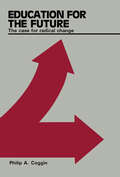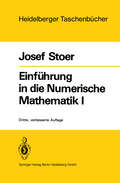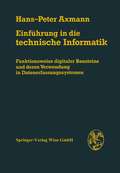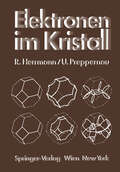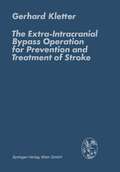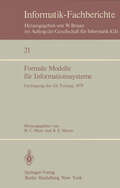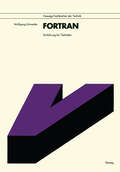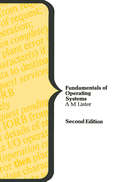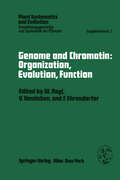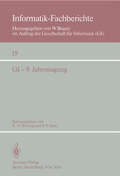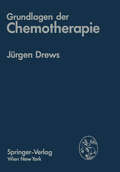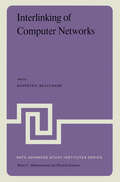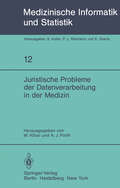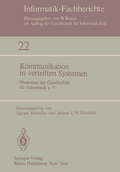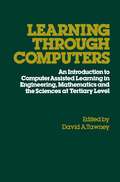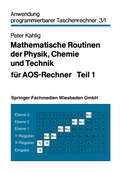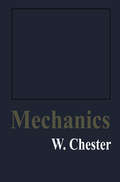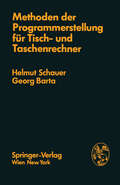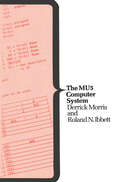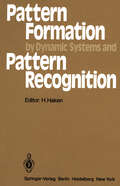- Table View
- List View
Der Verkehrsfluß auf Schnellstraßen: Modelle, Überwachung, Regelung (Fachberichte Messen - Steuern - Regeln #3)
by M. CremerEducation for the Future: The Case for Radical Change
by Philip A. CogginEducation for the Future: The Case for Radical Change focuses on the developments in educational systems and the role of teachers and learning institutions in shaping society. The book first ponders on the problems confronting progress in education, including the pressure on schools and teachers to perform according to the dictates of society. The need to develop curriculum in universities that can instill efficient learning for students is also underscored. The text also takes a look at the relationship of literary culture and the productive and distributive activities of the market place. The manuscript focuses on the influence of educational technology in the provision of aids in learning. The text also underscores that the solution to the problems of education in Britain should not be taken individually, but rather it should be treated as part of a larger pattern. The controversy in the establishment of the Gresham College is noted. The book is a dependable reference for readers interested in studying the development, issues, and trends in the educational system of Great Britain.
Einführung in die Numerische Mathematik I: unter Berücksichtigung von Vorlesungen von F.L. Bauer (Heidelberger Taschenbücher #105)
by J. StoerEinführung in die technische Informatik: Funktionsweise digitaler Bausteine und deren Verwendung in Datenerfassungssystemen
by H.-P. AxmannExperimentelle Längsschnittuntersuchung zur schreibmotorischen Entwicklung in der Grundschule. Mikromotorische Schreibdruckkurvenregistrierung bei unterschiedlichen Schreibübungsgeräten (Forschungsberichte des Landes Nordrhein-Westfalen)
by Arthur SchirmerThe Extra-Intracranial Bypass Operation for Prevention and Treatment of Stroke
by G. KletterA decade has passed since systematic studies were initiated in the USA in an attempt at establishing the experimental basis for a surgical technique which was to prove an effective tool in combatting one of the most common diseases, i.e. cerebrovascular accidents. The development of such intricate vasculosurgical techniques as are required for extra intracranial arterial bypass operations would not have been possible without the aid of the surgical microscope, which had been designed some years earlier. In the past few years increasing emphasis has been placed on establishing clear-cut indications for the bypass operation, because satisfactory long-term results are unlikely to be obtained without them. Needless to say that this requires a close cooperation of the neurosurgeon with a team composed of neurologists, internists, radiologists, and pathologists. Fortunately enough, cooperation between the services of the University of Vienna Medical School proved to be exemplary. While there has been no lack of efforts by major medical centers both in Europe and the overseas countries to perfect bypass operations for cerebrovascular accidents, a comprehensive monograph reviewing all medical and operative problems involved in microvascular surgery for strokes was badly missed by many.
Formale Modelle für Informationssysteme: GI-Fachtagung, 24.–26. Mai 1979, Tutzing (Informatik-Fachberichte #21)
by H. C. Mayr B. E. MeyerFortran: Einführung für Techniker
by Wolfgang SchneiderDie Programmiersprache FORTRAN ist eine mathematisch-naturwissenschaftlich orientierte Programmiersprache. Sie ist vor allem auf die Bedürfnisse von Wissenschaftlern, Ingenieuren und Technikern zugeschnitten. Es ist nicht erforderlich, über elementare Grundkenntnisse in dieser Programmiersprache hinauszugehen, wenn nur gelegentlich Probleme selbstständig zu programmieren sind und es nicht darauf ankommt, wie elegant das Problem programmtechnisch gelöst wird, sondern nur, daß es gelöst wird. Dieses Buch isoliert deshalb bewußt den Teil der Programmiersprache FORTRAN, der unbedingt zur Erstellung von Programmen erforderlich ist. Besonderer Wert wurde auf einprägsame Merksätze, Übungen, Zusammenfassungen und vollkommen durch programmierte Beispiele gelegt. Das Buch wurde vorwiegend für Studierende an Fachschulen Technik und Fachhoch schulen geschrieben. Dr. Wolfgang Schneider In haltsverzeich n i s 1. Grundlagen der Datenverarbeitung 1 .1. Der Begriff der Datenverarbeitung 1.2. Die Arbeitsweise einer Datenverarbeitungsanlage (OVA) Programmiersprachen 3 2. 2.1. Allgemeines 3 2.2. Maschinensprachen 3 2.3. Assemblersprachen 3 2.4. Problemorientierte Programmiersprachen 4 3. Problemaufbereitung und Aufstellung von Programmablaufplänen 5 3.1. Problemaufbereitung 5 3.2. Programmablaufpläne 5 3.3. Vorteile bei der Anwendung von Programmablaufplänen 7 4. Schreiben des Primärprogramms 7 4.1. Die Lochkarte 8 4.2. Das FORTRAN-Programmformular 9 4.2.1. Kom men taran künd igungen 11 4.2.2. Anweisungsnummern 11 4.2.3. Fortsetzungskarten 12 4.2.4. Anweisungen 12 Kartenkennzeichnung 4.2.5. 13 Besonderheiten bei Eintragungen in FORTRAN-Programmformulare 13 4.2.6.
Genome and Chromatin: Symposium, Kaiserslautern, October 13–15, 1978 (Plant Systematics and Evolution - Supplementa #2)
by W. Nagl V. Hemleben F. EhrendorferAt a round table discussion on the eukaryotic chromosome sponsor ed by the Deutsche Forschungsgemeinschaft in Diisseldorf, February 1978, the botanists among the participants felt that plant systems were under-represented. In this unsatisfactory situation, Professor V. HEMLEBEN, Tiibingen, suggested another meeting to discuss actual problems and results concerning botanical chromosome research. Professor W. NAGL was willing to organize a symposium at the University of Kaiserslautern, and Professor F. EHRENDoRFER, Wien, contacted the Rpringer-Verlag, Vienna-New York, to explore the possibility of publishing the results of this symposium in the form of a supplement volume to the journal Plant Systematics and Evol7ttion. The conference took place on 13-15 October 1978 in the Department of Biology of the University of Kaiserslautern and was attended by 40 participants from 11 universities between Hamburg and Vienna. Emphasis of this Chromosome Symposium was given to three aspects, which do not attract major interest at large international congresses: 1. Discussion and Demonstration of technical details which cannot be found in published papers (so-called tricks). 2. Orientation about actual trends and results in our understanding of the organization, evolution, and function of the plant genome at the level of the DNA (gene), the level of chromatin, and the level of the karyotype. 3. Presentation of hypotheses and models which may be stimulating for further research. Moreover, younger students should have the possibility to present their results and to discuss them with more experienced scientists.
GI — 9. Jahrestagung: Bonn, 1.–5. Oktober 1979 (Informatik-Fachberichte #19)
by K. H. Böhling P. P. SpiesInterlinking of Computer Networks: Proceedings of the NATO Advanced Study Institute held at Bonas, France, August 28 – September 8, 1978 (Nato Science Series C: #42)
by K. G. BeauchampThis volume contains the papers presented at the NATO Advanced Study Institute on the Interlinking of Computer Networks held between August 28th and September 8th 1978 at Bonas, France. The development of computer networks has proceeded over the last few decades to the point where a number of scientific and commercial networks are firmly established - albeit using different philosophies of design and operation. Many of these networks are serving similar communities having the same basic computer needs and those communities where the computer resources are complementary. Consequently there is now a considerable interest in the possibility of linking computer networks to provide resource sharing over quite wide geographical distances. The purpose of the Institute organisers was to consider the problems that arise when this form of interlinking is attempted. The problems fall into three categories, namely technical problems, compatibility and management. Only within the last few years have the technical problems been understood sufficiently well to enable interlinking to take place. Consequently considerable value was given during the meeting to discussing the compatibility and management problems that require solution before x FOREWORD global interlinking becomes an accepted and cost effective operation. Existing computer networks were examined in depth and case-histories of their operations were presented by delegates drawn from the international community. The scope and detail of the papers presented should provide a valuable contribution to this emerging field and be useful to Communications Specialists and Managers as well as those concerned with Computer Operations and Development.
Juristische Probleme der Datenverarbeitung in der Medizin: GMDS/GRVI Datenschutz-Workshop 1979 (Medizinische Informatik, Biometrie und Epidemiologie #12)
by W. Kilian A. J. PorthKommunikation in verteilten Systemen: Workshop der Gesellschaft für Informatik e.V., 3.–4. Dezember 1979, Berlin (Informatik-Fachberichte #22)
by S. Schindler J. C. W. SchröderLearning Through Computers: An Introduction to Computer Assisted Learning in Engineering, Mathematics and the Sciences at Tertiary Level
by D. TawneyMathematische Routinen der Physik, Chemie und Technik für AOS-Rechner (Anwendung programmierbarer Taschenrechner)
by Peter KahligMechanics
by W. ChesterWhen I began to write this book, I originally had in mind the needs of university students in their first year. May aim was to keep the mathematics simple. No advanced techniques are used and there are no complicated applications. The emphasis is on an understanding of the basic ideas and problems which require expertise but do not contribute to this understanding are not discussed. How ever, the presentation is more sophisticated than might be considered appropri ate for someone with no previous knowledge of the subject so that, although it is developed from the beginning, some previous acquaintance with the elements of the subject would be an advantage. In addition, some familiarity with element ary calculus is assumed but not with the elementary theory of differential equations, although knowledge of the latter would again be an advantage. It is my opinion that mechanics is best introduced through the motion of a particle, with rigid body problems left until the subject is more fully developed. However, some experienced mathematicians consider that no introduction is complete without a discussion of rigid body mechanics. Conventional accounts of the subject invariably include such a discussion, but with the problems restricted to two-dimensional ones in the books which claim to be elementary. The mechanics of rigid bodies is therefore included but there is no separate discussion of the theory in two dimensions.
Methoden der Programmerstellung für Tisch- und Taschenrechner: Grundlagen, Anwendungen, Grenzen
by H. Schauer G. BartaPattern Formation by Dynamic Systems and Pattern Recognition: Proceedings of the International Symposium on Synergetics at Schloß Elmau, Bavaria, April 30 – May 5, 1979 (Springer Series in Synergetics #5)
by Hermann HakenThis book contains the manuscripts of the papers delivered at the International Sym posium on Synergetics held at SchloB Elmau, Bavaria, Germany, from April 30 until May 5, 1979. This conference followed several previous ones (Elmau 1972, Sicily 1974, Elmau 1977). This time the subject of the symposium was "pattern formation by dynam ic systems and pattern recognition". The meeting brought together scientists from such diverse fields as mathematics, physics, chemistry, biology, history as well as experts in the fields of pattern recognition and associative memory. When I started this type of conference in 1972 it appeared to be a daring enter prise. Indeed, we began to explore virgin land of science: the systematic study of cooperative effects in physical systems far from equi~ibrium and in other disciplines. Though these meetings were attended by scientists from quite different disciplines, a basic concept and even a common language were found from the very beginning. The idea that there exist profound analogies in the behaviour of large classes of complex systems, though the systems themselves may be quite different, proved to be most fruitful. I was delighted to see that over the past one or two years quite similar conferences were now held in various places allover the world. The inclusion of prob lems of pattern recognition at the present meeting is a novel feature, however.
